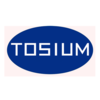2198和5A90鋁鋰合金脈沖陽極氧化膜制備及耐蝕性2198和5A90鋁鋰合金脈沖陽極氧化膜制備及耐蝕性Preparation and Corrosion Resistance of Pulse-Current Anodic Oxidation Films of 2198 and 5A90 Al-Li Alloys 在18%(質量分數,下同)H2SO4+5%C2H2O4水溶液中,采用脈沖(PC)電流對2198和5A90兩種鋁鋰合金進行陽極氧化處理。用掃描電子顯微鏡(SEM)觀察鋁鋰合金陽極氧化膜表面和截面形貌;用能譜儀(EDS)對其成分進行面掃描和線掃描;用動電位極曲線檢測氧化膜在3.5%NaCl水溶液中的耐蝕性。結果表明:2198和5A90鋁鋰合金陽極氧化膜主要由Al的氧化物組成;2198合金氧化膜表面存在細小顆粒,厚度約為150 μm;5A90合金氧化膜表面存在微孔,為后續封孔處理提供結構條件,厚度約為180 μm;用脈沖方法在兩種鋁鋰合金表面生成的較厚陽極氧化膜具有較高的耐蝕性。 Anodic oxidation processes of 2198 and 5A90 Al-Li alloys were carried out with pulse-current (PC) in the mixture of acid solution of 18%(mass fraction,the same below)H2SO4+5%C2H2O4 at room temperature. Surface and cross-sectional morphologies and composition distributions of anodic oxidation films were observed and determined by scanning electron microscope equipped with energy disperse spectroscopy (SEM/EDS). The corrosion resistances of these films were assessed by means of 10%NaOH aqueous solution dropping test and potentiodynamic polarization plot in 3.5% NaCl solution. The results show that the oxidation films of 2198 and 5A90 Al-Li alloys are mainly composed of Al oxides. For 2198 Al-Li alloy, fine and small particles evenly distribute in the oxidation film; and the film thickness is about 150 μm. For 5A90 Al-Li alloy, micro-pores existing in the film can provide better structure for later sealing; and the film thickness is nearly 180 μm. The larger thickness oxidation films of both two kinds of alloys prepared by pulse current anodic oxidation treatment have superior corrosion resistance in 3.5%NaCl solution.
|







